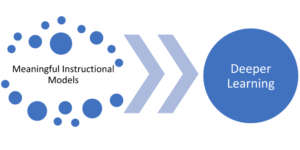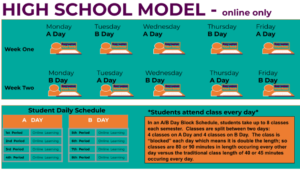Is Geometry the Unsung Hero of Mathematics Instruction?

By Yana Mohanty, Ph.D.
“Geometry will draw the soul toward truth and create the spirit of philosophy.”—Plato.
There is a widening gap between the effective teaching of geometry in elementary schools and the geometry skills students need in high school. Often, geometry tasks at the younger grades are limited to identifying shapes or labeling properties; in high school, students are expected to use abstract reasoning to prove a complex relationship. Dynamic, engaging instruction in geometry has traditionally been overlooked during middle school, causing a critical gap between elementary school experiences and the thought processes required in high school.
Why do we need geometry in schools?
Geometry is all around us. It is part of our daily lives, whether we are at a cafe (see picture below), a construction site, or at the post office. Geometry gives us the tools to engage analytically with our everyday surroundings. It turns out that these tools provide us with more than just an amusing intellectual exercise. A growing body of research links spatial reasoning with future success in other academic pursuits. Interestingly, these pursuits reach far beyond geometry or even mathematics. Elementary school teachers and researchers at the University of Toronto found that students given lots of spatial reasoning exercises ended up doing better in numeracy, patterning and other areas of mathematics. In an unrelated study, researchers showed that spatial thinking skills are strongly related to students’ future success in STEM disciplines.
A common notion held by many people is that math is mostly about numbers.
This erroneous idea is part of the reason that many people write themselves off as being “not good in math”. Not only are geometry and geometrical thinking crucial components of mathematics, but they may also provide an excellent entry point to the subject for those students who think they are not interested or not good at math. Geometry is intimately connected with the visual arts—in fact, many leading artists of the Renaissance, such as da Vinci, Durer, and others took a keen interest in mathematics. Therefore, starting with geometry may spark an interest in math in students that would not consider themselves mathematically inclined.
In addition, geometry is, arguably, the area of math that lends itself most to being taught with hands-on tools, or “manipulatives.” These include pattern blocks, construction tools, or just sometimes just shapes that students cut out of paper. Manipulatives give students an opportunity to experience math kinesthetically, and this provides yet another entry point for those students who may be less receptive to traditional instruction. Since numerical and algebraic relationships are closely interwoven with geometric shapes, geometry provides a natural segue to other areas of mathematics. If you can get kids hooked on the importance of geometry before they come to the even more complex world of algebra and trigonometry, it will increase their chances of understanding and even loving mathematics later in their student and professional careers.
So, what’s the problem?
Geometry teaching in the US tends to be weak, even in high-achieving schools. Starting at the elementary school level, geometry is often relegated to the end of the traditional school year. By that time, both students and teachers tend to be tired, and the mental energy and time spent on geometry is often insufficient to do justice to the subject. Moreover, leaving geometry to the end robs students of the opportunity to see the essential connections of geometry to other areas of STEM throughout the school year.
It’s no wonder that, when students hit high school, they are often bewildered by the level of geometry at which they are expected to be working. If it hasn’t been introduced properly at elementary or middle-school level, they become very quickly disheartened by the struggle and may even give up the idea of math completely.
Instead of treating geometry as the crucial (and fun) foundational subject that it is, it is presented as a chore, and as the ‘down-side’ to math.
This must be addressed: if we enhance students’ geometry skills, we enhance their spatial intelligence and overall mathematical intellect.
Spatial Awareness
Spatial ability or visualization is essential in engineering and scientific fields. It is a skill that is required for the effective generating and transforming of visual images. Verbal IQ tests and Scholastic Aptitude Tests (SATs) are great for measuring the two other critical cognitive abilities- quantitative and verbal- but they do not sufficiently measure spatial ability, and those who are gifted in the area often go unnoticed.
Thus, if we neglect geometry (and therefore spatial ability) in the school curriculum, as well as in standard assessments, the students with spatial strengths will be in the minority- and it is they who are required to push the boundaries of the technical and scientific professions.
For more, see:
- 7 Ways to Boost your K-8 Math Program
- Mathematical Discourse: A Matter of Sharing and Questioning
- Middle Grade Math: Comprehensive and Open
Yana Mohanty, Ph.D., is a math coach, former math lecturer at the University of California, San Diego and Palomar College, and inventor of Geometiles. Follow them on Twitter: @geometiles.
Stay in-the-know with all things EdTech and innovations in learning by signing up to receive the weekly Smart Update.






Diego Cardoso
I agree with the article. I am a brazilian who was consider to be "good" at math until I reached High school, and then I discovered that I had treated geometry as something apart from the basic math I was learning, I don't even get why. I'm trying to catch up with it now.